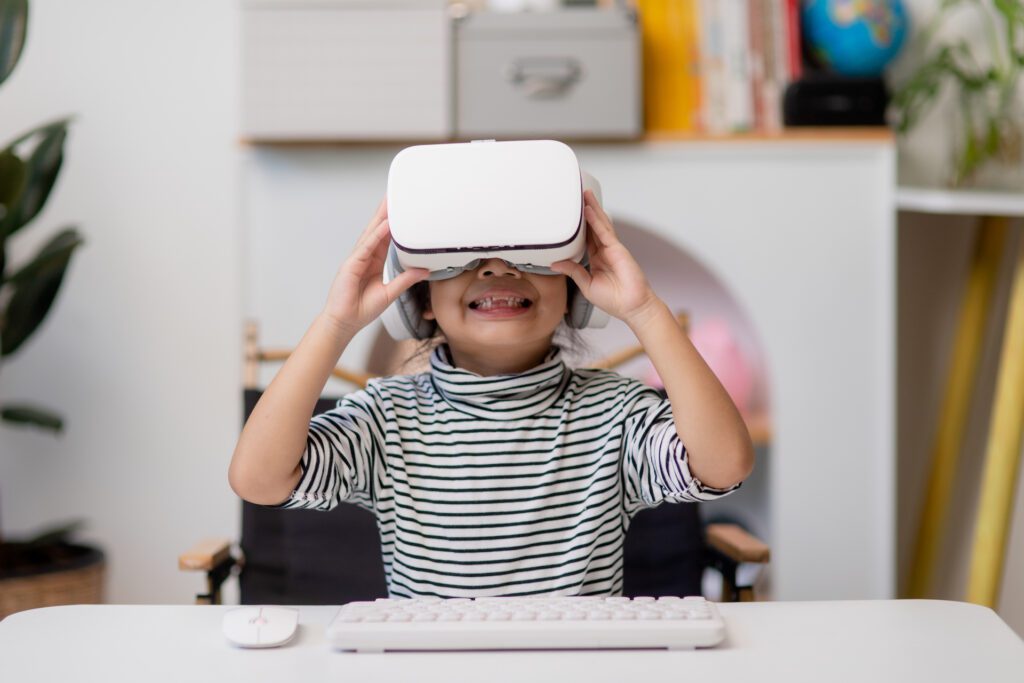EdTech and Education in 2022: The 4 Leading Innovations

EdTech is one of those sectors that have only emerged stronger since the global pandemic. In fact, the education sector is expected to be a $7.2T market by 2025. As direct investments increase in the USA and Southeast Asia-based competitors continue to pick up the pace, four technologies are leading the charge. According to market aggregator HolonIQ, these 4 are AR/VR, AI, Robotics and Blockchain in order of prevalence.
How exactly are companies integrating these advanced technologies into core educational delivery?
1. AR/VR
AR/VR is cited to be the most dominant and is predicted to remain so for the foreseeable future. This is attributed to a strong interest in augmented reality-enhanced pedagogy. Not only is this relatively new, but AR is also promising to be the most immersive medium for media-centric instruction compared to traditional alternatives such as video.
As technology advances, there is also great potential for issuing a remote professional certification and formal asynchronous training. This ultimately makes it top our list of leading technologies.
2. AI
AI is projected to exhibit the most significant growth among the four. By 2025, it is expected to grow 760% since 2018. This comes as no surprise if we examine the sheer variety of its use cases.
Let’s take a look at some examples of AI in different segments of education. On the standard consumer front, you have language learning apps such as Elsa that enhance English learners’ speaking confidence through speech recognition and pronunciation analysis.
In corporate settings, we are also seeing more gamification elements introduced to improve employee retention and upskilling. An example is the company Trivie which employs adaptive learning and issues micro-credentials.
Finally, AI is now becoming increasingly prominent in the K-12 space too as schools look to personalise each child’s learning pathways. (Have a glimpse at our Student Mastery Portal!)
3. Robotics
Robotics appears to be a segment that’s closely linked to AI thanks to the deep applications of AI in robotics solutions. Its market in education is projected to be worth $3.1B by 2025.
In education, it has made its mark as a leading STEM curriculum tool. Thanks to third-party providers. Child-friendly programming interfaces have also risen in popularity as more countries introduce computational thinking into early-stage K-12 education.
A good example is STEM Minds, a hardware provider that promises to elevate STEM pedagogy and curriculum design. They frequently host programming sessions and are a trusted partner for schools, acting as a curriculum provider. Thus far, they have already engaged over 50,000 students and certified thousands of educators to utilise robotics as a means to guide STEM instruction.
4. Blockchain
Compared to its counterparts that we delved into earlier, blockchain technology forms a relatively smaller market. Nevertheless, it has found itself a strong niche – it’s being used to create foolproof document verification systems. Admittedly, this is an area that may not be directly related to education nor pedagogy.
However, a tamper-proof system remains in the best interest of all learners. It provides us a way to track a learner’s learning outcomes through certifications and course completions reliably while preventing fraud. It gives stakeholders greater assurance when evaluating prospective students or employees.
Curious to know more? Here’s a peek at Edufied, an EdTech company that leverages blockchain in solutions.
Conclusion
As you can see, many exciting innovations are taking place in education. These changes will likely significantly impact how students learn and what they can achieve in school. We encourage you to stay up-to-date on these developments so that you can prepare yourself for the changes that are coming. Thanks for reading!



